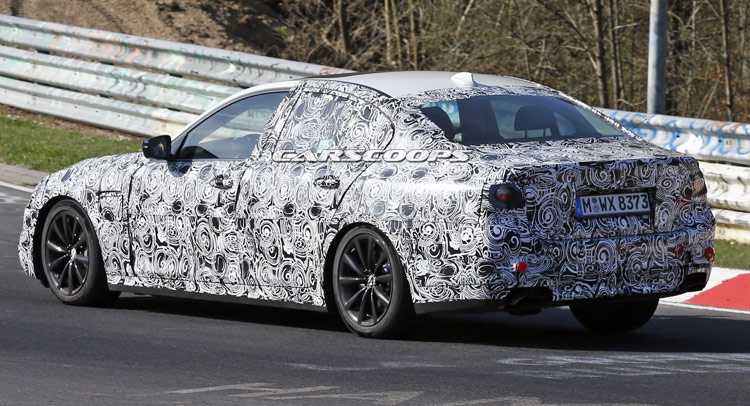One of the problems that BMW is facing with the 5-Series is that it has grown considerably both in size and in weight over the years slowly losing its dynamic edge over the competition.
Today, the F10-gen 5-Series is almost as big and crucially, as heavy as the mid-1990s, early 2000s E38 7-Series, with the Bavarian car feeling a whole lot more executive than sporty on the road, especially when compared to the highly acclaimed E39-gen model.
The next 5-Series, codenamed G30, won’t get any smaller, but it will at least become lighter cutting weight through the extended use of aluminum, composites and possibly even carbon-fiber-reinforced plastic (CFRP) – just like the upcoming 7-Series.
The diet will include interior components that will be slimmed down in order to achieve total weight savings of around 100 kg or 220 pounds that will most certainly help the 5-Series handle better. Hopefully, BMW engineers will be able to improve the feel of the 5er’s game-like electric steering.
While this latest tester had more production parts than previous prototypes such as the headlamps, it’s still covered in camouflage making it difficult to read all the design details. The sense we get, however, is that the styling will be evolutionary (which isn’t necessarily a bad thing as we like current model’s looks) with more chiseled surfaces, a flatter rear window, and slightly more aggressive front and rear ends.
BMW will skip the three-cylinder turbo powerplants on the 5-Series that will obtain the latest versions of its straight-four and inline-six turbocharged diesel and gasoline units, along with a newly developed V8 for the 550i’s successor (despite rumors of the opposite), paired to 6-speed manual transmissions on lower-end engines and a new 9-speed automatic on higher-output mills. Both rear- and all-wheel drive configurations will be on offer for most engines.
Surprisingly, this will likely include the high-performance M5 model that will follow later on, as we’ve already caught BMW engineers driving all-wheel drive test mules based on the current M5 sedan. The next M5 will employ the use of an improved twin-turbo V8 churning out close to 600-horses.
A plug-in hybrid variant featuring the new X5 PHEV’s 240hp 2.0-liter engine paired to an 111hp electric motor that sits in the front section of the automatic transmission will join the range as well.
The new 5-Series sedan may show up late next year in Europe, but don’t expect to see it in US showrooms before 2017.
Photo Credits: CarPix for CarScoops












